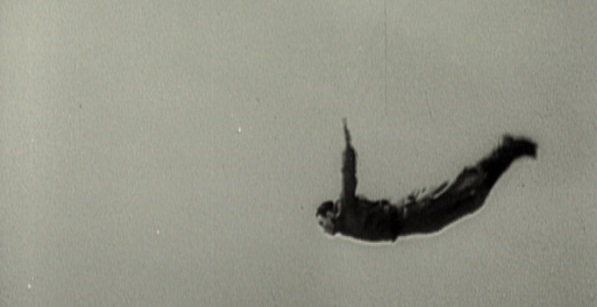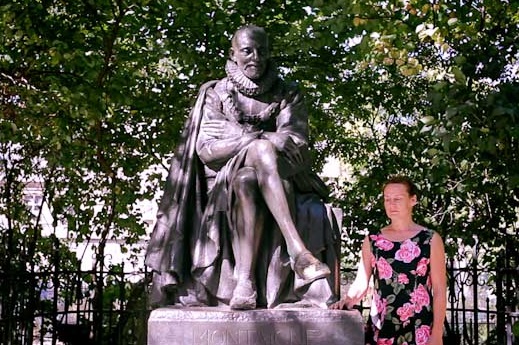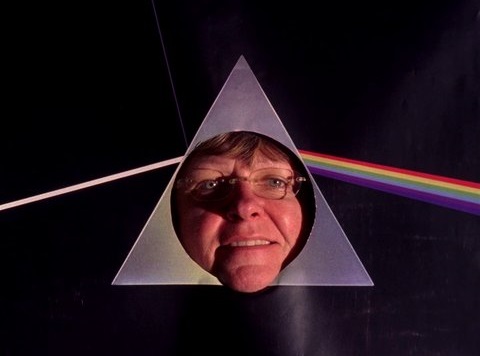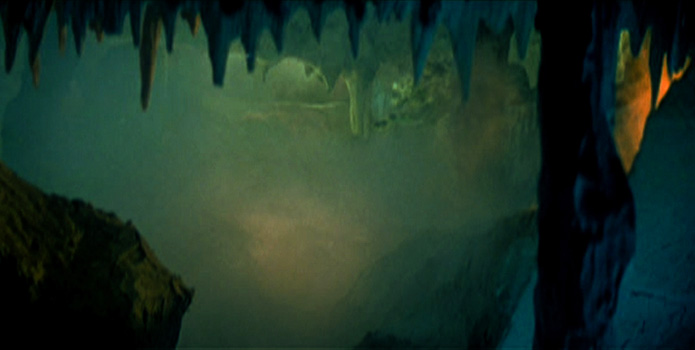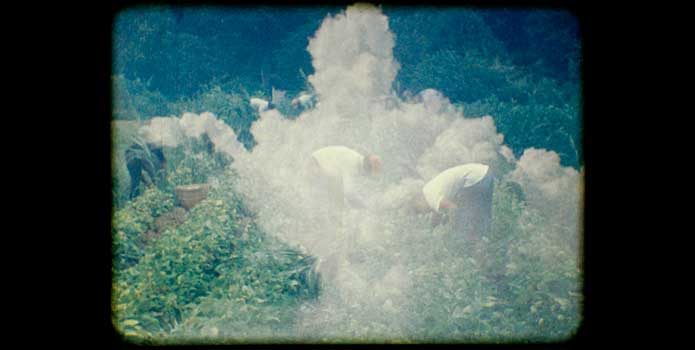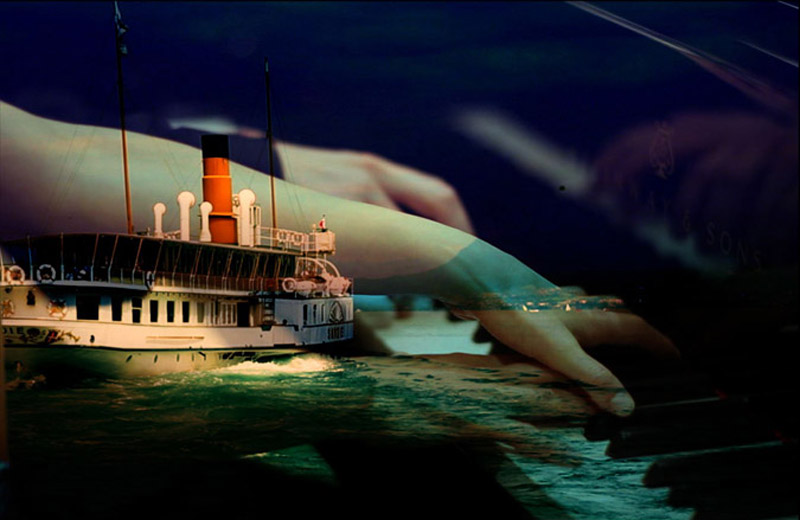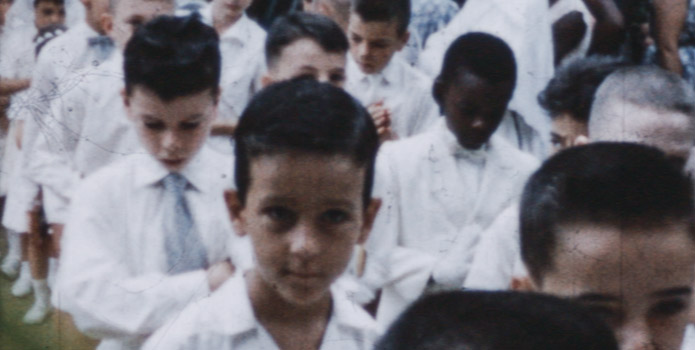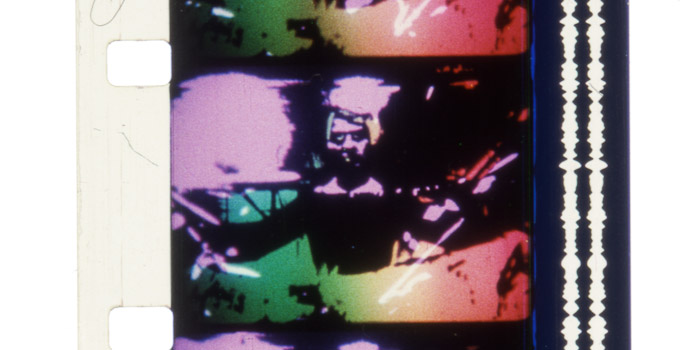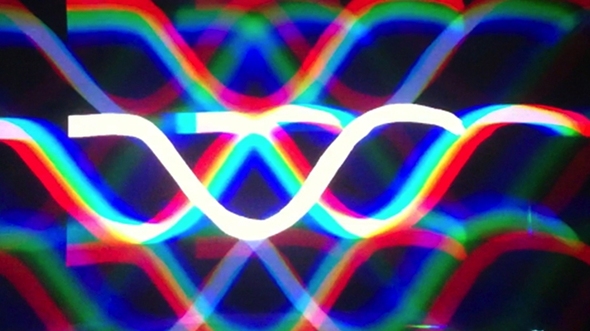For all the cinematic death knells sounded these past twelve months, it speaks optimistically to the health of the medium that so many qualifications had to be implemented in the creation of this list. The term avant-garde has recently come to encompass so many disparate modes of progressive filmmaking that left to my own devices this list could effortlessly expand by at least a few dozen entries. These ten selections are therefore not meant to define the entirety of the year’s experimental cinema. In the interest of highlighting some of the more fringe and eccentric work being made today, I’ve limited my options to short form, non-narrative work that premiered (or, in one case re-premiered) at a festival in 2013. Thus, feature-length narratives that nonetheless implement similar aesthetic techniques such as Stray Dogs, Three Interpretation Exercises, and The Strange Little Cat were not considered, nor were works which combine elements of fiction and nonfiction storytelling such as Daredevils, Manakamana, and A Spell to Ward off the Darkness. Furthermore, as thorough as I’d like to be even within these parameters—and as nice as friends, programmers, and publicists have been to send me certain films—I only attended so many festivals this year. These ten selections should therefore be considered as a starting point, suggestions for further research as these films and their creators travel the festival and repertory circuit over the coming months and years.
10. Un conte de Michel de Montagne / Jean-Marie Straub (Locarno: Fuori concorso; Toronto: Wavelengths)
This most contentious of spots could have easily gone to any number of exciting new works (Luther Price’s Pop Takes or Tasaka Naoko’s Flower, for example), but if I ultimately opted for a veteran it’s because: A) The veteran in this instance is the venerable octogenarian Jean-Marie Straub, who’s every new project continues to feel like a gift from an entirely different medium, and B) As another in Straub’s late-career flourish of highly mannered literary recitations, Un conte de Michel de Montagne severs thematic and aesthetic elements to such a disorienting degree that mentally parsing its properties will take many years and many subsequent viewings to fully realign.
9. Dusty Stacks of Mom: The Poster Project / Jodie Mack (Images: Stacks; New York: Views from the Avant-Garde)
As far as arriving on a national scene, Jodie Mack must be considered 2013‘s breakout star of the avant-garde. With no less than five new works premiering this calendar year alone, the infectiously animated Mack makes films of equally enchanting, hand-crafted care. Combining elements analog animation, stop-motion miscellany, performance art physicality, and rock opera histrionics, the forty-five-minute Dusty Stacks of Mom: The Poster Project, serenaded by Mack’s live vocal re-imagining of Pink Floyd’s Dark Side of the Moon, is not only the young filmmaker’s most ambitious project to date, but also a monument to familial economics and a dizzying in-person A/V experience in its own right.
8. Song and Spring / Nathaniel Dorsky (Toronto: Wavelengths; New York: Views from the Avant-Garde)
Nathaniel Dorsky has been working at an impressive clip the last couple years, turning out some of the best work (The Return, August and After) of his now half-century career. This year he checked in with Spring and Song, a pair of deceptively modest films that, while distinctly individuated works, are meant to be programmed together and in many appropriate ways play as inverses of one another. You can consider this a nod to both, then, but Song in particular strikes me as a grave variant on Dorsky’s more serene work. An alternately nocturnal and resplendent journey through natural and urban milieu, this quietly unsettling film methodically bears witness to life bleeding into the margins of climate and composition alike.
7. Mount Song / Shambhavi Kaul (Toronto: Wavelengths; New York: Views from the Avant-Garde)
Shambhavi Kaul’s Mount Song was for me perhaps the year’s most unexpected delight. Consisting solely of stoic shots of curiously abandoned film sets (most of the Eastern, genre-tinged variety, and all presumably of found footage origin), Kaul’s latest attempts to locate the spirit in the inanimate constructs of cinematic exoticism. Save for some slow-gathering banks of fog and wind-brushed faux fauna, there’s not much activity to note in Mount Song, but in the blank yet highly expressive mise-en-scène lies an underlined inertia that is almost thrilling in its metaphysical potential.
6. Three Landscapes / Peter Hutton (Toronto: Wavelengths; New York: Views from the Avant-Garde)
Six years on from the landmark At Sea, Detroit native Peter Hutton returns with an equally patient portrait of a different kind of industrial evolution. As it title partly suggests, Three Landscapes’ triptych construction charts human movement against a panorama of vast backdrops, observing the hypnotic march of manual labor under conditions both extreme (atop a Detroit suspension bridge; amidst the heat-stroked Ethiopian desert) and pastoral (along Hudson Valley farmland). In quietly contrasting the intimate with the imposing, Hutton casually imbues the latter with the former—that is, until the film’s film shot, in which the two become inseparable to the mind’s eye.
5. Les trois désastres / Jean-Luc Godard (Cannes: Semaine de la critique)
As one of the first to exploit the aesthetic possibilities of video, and then later digital, cinema, it’s no surprise that Jean-Luc Godard would one day try his hand at 3-D technology. Thus, in anticipation of his upcoming feature Adieu du language, the French iconoclast offered the short, stimulating experiment Les trois désastres. Adding literal dimension and depth to an already kaleidoscopic montage, pivoting between interlocking planes of thematic and compositional discourse throughout, Les trois désastres not only hints at further exploration but also stands as a historical, political, and cinematic rejoinder to a marketplace of hollow ambition and staid artistry. Histoires du cinéma indeed.
4. The Realist / Scott Stark (Toronto: Wavelengths; New York: Views from the Avant-Garde)
Looking back at my TIFF coverage here in Keyframe I notice now that I didn’t even mention Scott Stark’s The Realist, undoubtedly one of the highlights of this year’s Wavelengths program that is nonetheless difficult to contextualize among work of more modest conceptual aim. But subsequently viewed a second time and, more importantly, in light of Stark’s greater catalogue, it’s easy to confirm the film as the fullest realization yet of his digital phase, where his interest in the duality of the still image has bloomed into a stereophonic symphony—or, as Stark puts it, a two-and-a-half dimension display—of reanimated consumer culture and Plasticine pleasures.
3. Redemption / Miguel Gomes (Venice: Out of Competition; Toronto: Wavelengths)
Following the progressive narrative foreplay of Our Beloved Month of August and Tabu, Portugal’s premiere aesthetician Miguel Gomes retreated inward for this intoxicating 30-minute visual reminiscence of personal, political, and poetic intrigue. By turns nostalgic and conflicted, this four-part meditation on the ghosts of Portugal’s past (both recorded and remembered) unfolds like a particularly evocative entry in Gomes’ diary. A found footage film solely by association, Redemption instead operates as if by conceptual intuition, as a daydream, and as a cultural heirloom at once unbound to and in thrall of the medium’s spiritual and historical potentialities.
2. Variations on a Cellophane Wrapper / David Rimmer (Toronto: Wavelengths)
One of 2013’s major discoveries is not a contemporary work at all, but rather a 43 year-old piece by Canadian filmmaker David Rimmer, who presented a restored print of his 1970 film Variations on a Cellophane Wrapper at the Toronto International Film Festival. A hyper-kinetic, hands-on exploration of celluloid’s capacity for visual and auditory manipulation, Variations takes a simple shot of a female factory worker unraveling a sheet of cellophane and proceeds to inflict an array of looping and textural effects on the frame, presenting a spectrum of hallucinogenic possibilities within a single movement. Its aesthetic and conceptual coordinates could easily be mapped in many iterations of this list.
1. Let Your Light Shine / Jodie Mack (New York: Views from the Avant-Garde)
The year’s most appropriately named film is also one of its most breathtaking achievements, avant-garde or otherwise. Jodie Mack’s extraordinary 3D short Let Your Light Shine—“a spectacle for prismatic spectacles”—laces white-hot shards of horizontal light through a gauntlet of optical effects to produce a kaleidoscopic three-minute dance of tactile tremors and neural pleasures. A wholly immersive and near-weightless experience, the piece exists outside most conventions of even non-narrative visual art, simultaneously collapsing and expanding perception to encompass the full spectrum of sensory existence. It makes Gravity feel positively earth-bound by comparison.
For the complete list of year-end lists on Keyframe, go to The Year in Film: 2013.
For the complete index of the films on these lists, go to 2013 Year in Review: Indexed.

